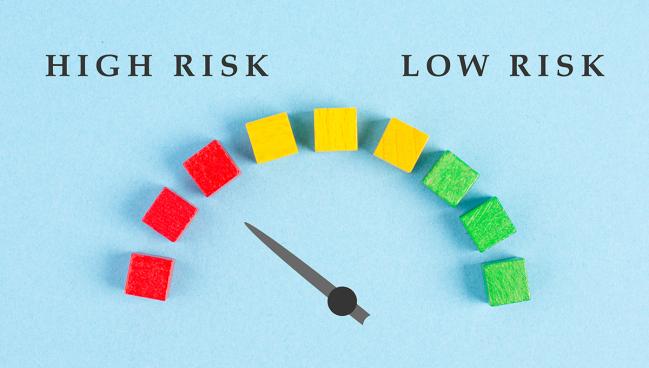GRACE 3.0: Women With NSTE ACS Get a Boost From Updated Score
Created by machine learning, the tool helps to shrink sex inequalities in risk stratification vs GRACE 2.0, researchers say.

By way of machine learning, researchers have improved upon the Global Registry of Acute Coronary Events (GRACE) 2.0 score’s ability to estimate in-hospital risk among both men and women with non-ST-segment elevation acute coronary syndromes.
Their new score, dubbed GRACE 3.0, helps to reduce sex differences in risk stratification. Importantly, one in 12 female patients who would have been considered low-to-intermediate risk by the 2.0 version were in fact high risk, while around one in 35 would have moved in the opposite direction.
Prior studies “have shown that early invasive treatment in [NSTE ACS] benefits only patients who are at high in-hospital mortality risk” and not those in in lower-risk categories, said Florian A. Wenzl, MD (University of Zürich, Schlieren, Switzerland), when presenting the work at the recent European Society of Cardiology (ESC) Congress 2022.
GRACE 2.0, recommended in current US and European guidelines, “is the most established score and clinical tool to guide treatment,” he said. “However, the score was derived from and validated in predominately male patient populations, and its performance in female patients with NSTE ACS is uncertain.”
Both GRACE 2.0 and 3.0 consider the same variables: age, heart rate, systolic blood pressure, Killip class, creatinine concentration, cardiac arrest, presence of ST-segment deviation, and presence of troponin elevation. The newer score was created by dividing data by sex and allowing for the possibility that baseline variables would have nonlinear effects on outcome.
To coincide with the ESC Congress, the results were published in the September 3, 2022, issue of the Lancet, with Wenzl and Simon Kraler, MD (University of Zürich), as dual first authors.
Senior investigator Thomas F. Lüscher, MD (Royal Brompton and Harefield Hospitals, London, England), told TCTMD that the knowledge that women with MI fare worse than their male counterparts is a “long story that has been discussed on numerous occasions.” In part, this is because of baseline differences, he said, pointing out that female MI patients tend to be a decade older, present later in the course of their disease, and are more likely to have diabetes, obesity, and hypertension. Beyond this, they are about 10% less likely to undergo angiography and to receive PCI.
“This is really a problem. . . . And so we were looking at: is the problem that risk assessment is not right? Because of course, the risk assessment tells you what to do. And indeed [we found] it was the case” that GRACE 2.0 gauged women to be at lower risk and thus less in need of early-invasive treatment, said Lüscher.
GRACE 2.0 “was developed a long time ago, and medicine changes,” he added. “Any score that’s developed, independent of sex or other things, needs to be reassessed, because the phenotype of our patients changes: they get more treatment, they eat [differently], you name it.”
Cardiology has “moved towards more personalized medicine,” Lüscher said. “This is just a little step forward.”
Hundreds of Thousands of Patients
Wenzl, Kraler, and colleagues tested GRACE 2.0 in 420,781 NSTE ACS patients treated in the United Kingdom and Switzerland between 2005 and 2020. For men, the discrimination of in-hospital death risk was good, with an area under the receiver operating characteristic curve (AUC) of 0.86, whereas for female patients, the AUC was “notably lower” at 0.82. Moreover, GRACE 2.0 had “suboptimal” calibration, with more errors.
Then, using machine-learning models (XGBoost) that were informed by the same GRACE variables, the researchers created the 3.0 score. They based their calculations on 386,591 patients from England, Wales, and Northern Ireland, with 80% of these individuals serving as the training cohort and 20% as the validation cohort. GRACE 3.0 offered better discrimination for both male and female patients, with AUCs of 0.91 and 0.87, respectively. It also offered “good calibration, resulting in clinically meaningful differences in the proportion of female and male patients with NSTE ACS stratified into the high-risk group,” they explain.
Applying GRACE 3.0 to the UK-based validation cohort moved 7.9% of female patients from the low-to-intermediate group into the high-risk group, while it moved 2.7% in the opposite direction toward lower risk. Among male patients, 3.6% shifted to higher risk and 5.8% shifted to lower risk. Thus, compared with GRACE 2.0, the newer score produced a net loss (-5.2%) in the proportion of women considered low-to-intermediate risk; for men, there was a net gain (+2.2%).
An external validation cohort consisting of 20,727 patients in Switzerland showed similar findings. However, the Swiss population is fairly homogeneous, Lüscher noted. “We will test this in other circumstances.”
A mobile-phone app for GRACE 3.0 is now being developed and soon will be available for free, he said. Future research also will look into cancer’s role as a risk factor in MI.
[GRACE 2.0] was developed a long time ago, and medicine changes. Any score that’s developed . . . needs to be reassessed. Thomas F. Lüscher
Eva de Miguel-Balsa, MD (Hospital General Universitario de Elche, Alicante, Spain), in an accompanying Lancet editorial, agrees that “of great interest for daily practice” are the portion of female patients reclassified by the new score into the higher-risk group.
“However, the implications for prognosis are nuanced,” she observes. “Although discrimination improves, the score still performs better in male patients, suggesting additional opportunities for improvement. Prospective studies are required to assess the effect of the revised score on clinical management and outcome once it becomes available for both clinical and research purposes.”
This study, while a “welcome” addition to the knowledge base, does have some limitations, says de Miguel-Balsa. Women made up just one-third of the data set, for instance, while sex was considered solely as a binary variable.
“Opportunities for improvement must include, in addition to improving the accuracy of diagnostic tools with a gender and sex perspective, continuing efforts to identify and correct gaps in the implementation of evidence-based recommendations,” she advises. “We must explore subgroups of women in whom the greatest or least therapeutic effort might be concentrated. This strategy includes considering sociocultural aspects, such as the role of the gender continuum, not only sex, both in women (prehospital) and in the health system.”
Caitlin E. Cox is News Editor of TCTMD and Associate Director, Editorial Content at the Cardiovascular Research Foundation. She produces the…
Read Full BioSources
Wenzl FA, Kraler S, Ambler G, et al. Sex-specific evaluation and redevelopment of the GRACE score in non-ST-segment elevation acute coronary syndromes in populations from the UK and Switzerland: a multinational analysis with external cohort validation. Lancet. 2022;400:744-756.
de Miguel-Balsa E. Risk stratification and health inequalities in women with acute coronary syndrome: time to move on. Lancet. 2022;400:710-711.
Disclosures
- Wenzl and de Miguel-Balsa report no relevant conflicts of interest.
- Kraler reports travel support from the European Atherosclerosis Society and equipment and materials from Roche Diagnostics, outside the submitted work.
- Lüscher reports institutional educational and research grants from Abbott, Amgen, AstraZeneca, Boehringer Ingelheim, Daichi Sankyo, Novartis, and Vifor, as well as consulting fees from Daichi Sankyo, Philips, Pfizer, and Ineeo Inc, outside the submitted work. He holds leadership positions at the European Society of Cardiology, the Swiss Heart Foundation, and the Foundation for Cardiovascular Research—Zurich Heart House.





Comments